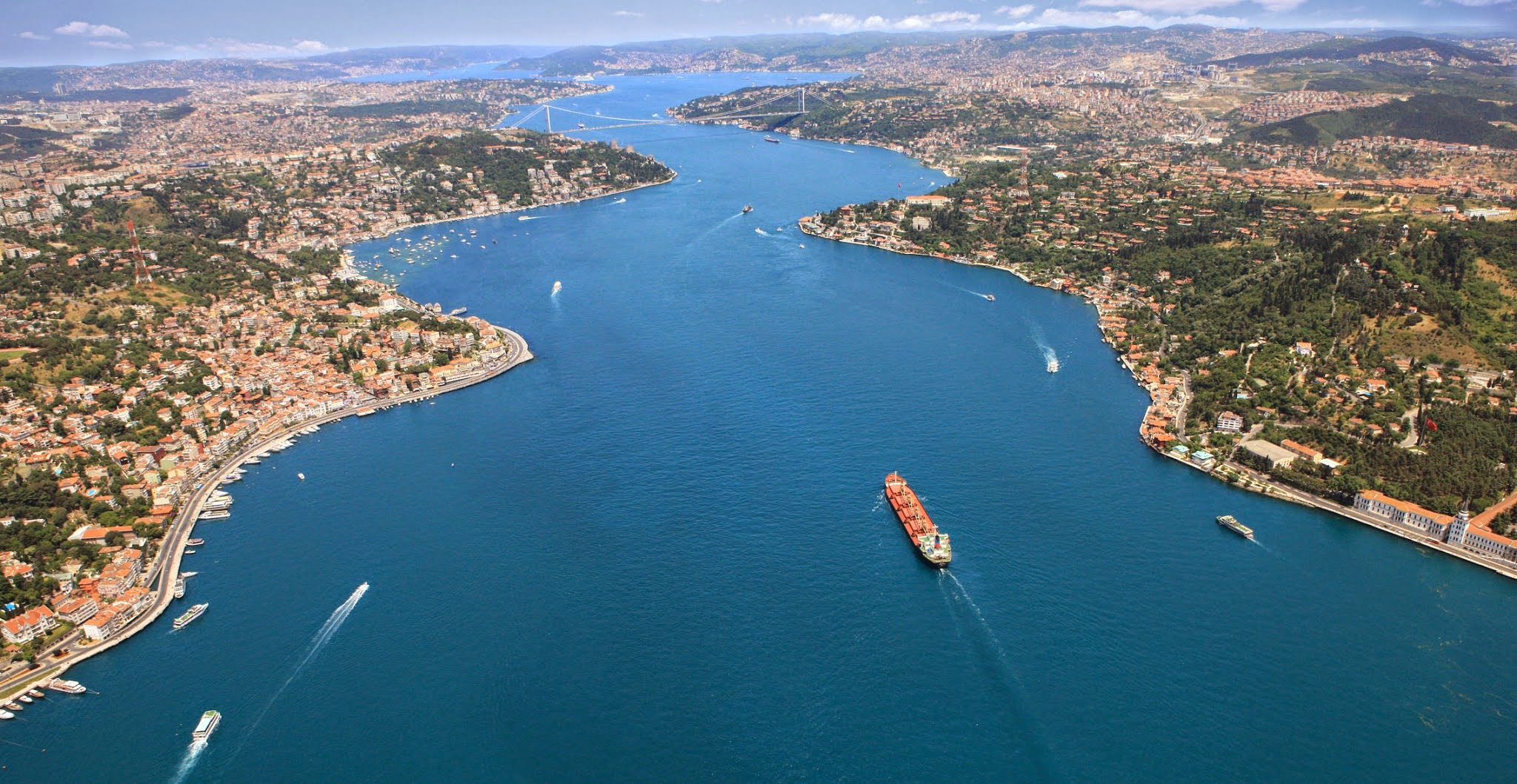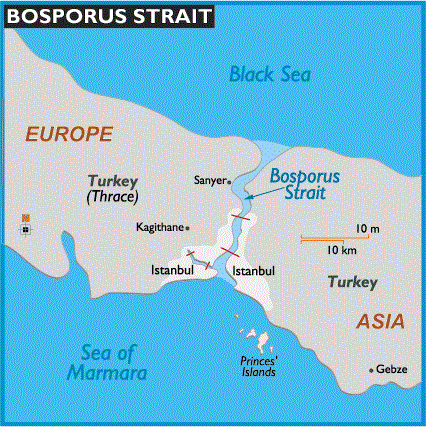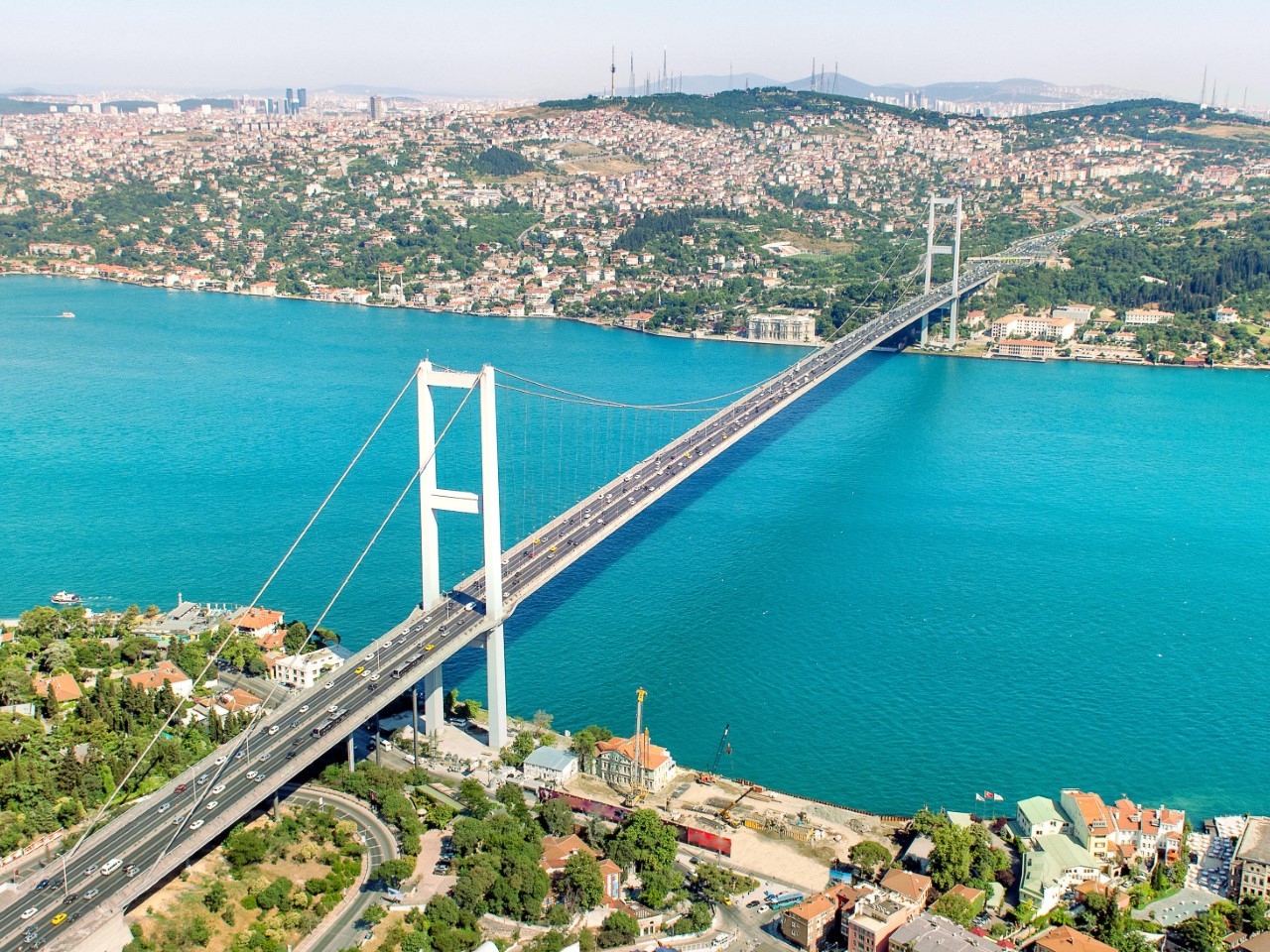The Bosphorus Strait
A Natural Wonder and Strategic Waterway
The Bosphorus Strait, a natural waterway dividing Europe and Asia, has been at the heart of history, trade, and culture for millennia. Stretching 31 kilometers (19 miles) and connecting the Black Sea to the Sea of Marmara, it has played a crucial role in the rise and fall of civilizations. From ancient Greek myths to modern geopolitical significance, the Bosphorus remains one of the most important and fascinating waterways in the world.
The Bosphorus Strait is not just a breathtaking sight; it is a strategic and economic lifeline. It serves as a major maritime trade route, allowing vessels from the Black Sea to access global markets. The narrowest point, at just 700 meters (2,300 feet) wide, has made it both a navigational challenge and a highly contested passageway throughout history.
Its shores are lined with Ottoman palaces, ancient fortresses, and modern mansions, showcasing the blend of civilizations that have shaped Istanbul over the centuries. Whether viewed from a ferry, a bridge, or the waterfront, the Bosphorus offers one of the most stunning landscapes in the world.

The Bosphorus in Ancient and Byzantine History
Greek Mythology and Early Settlements
The Bosphorus has been steeped in mythology since ancient times. According to Greek legend, the name “Bosphorus” means “Cow’s Passage” and originates from the tale of Io, a mortal lover of Zeus who was transformed into a cow and forced to wander the world, crossing the strait.
The strategic importance of the Bosphorus was recognized early on. Ancient Greek colonies, such as Chalcedon (Kadıköy) and Byzantium (later Constantinople), were established along its shores, serving as key trade and military hubs.
Byzantine Constantinople and the Defense of the City
When Constantine the Great declared Byzantium as the new capital of the Roman Empire in 330 AD, renaming it Constantinople, the Bosphorus became the empire’s lifeline. It allowed for easy trade and military defense while making the city nearly impenetrable.
During the Byzantine era, the Bosphorus saw multiple naval battles and sieges. In 1204, it witnessed the infamous Fourth Crusade, when Latin forces breached Constantinople, leading to a period of foreign rule.

The Ottoman Conquest and the Golden Age
Mehmed the Conqueror and the Fall of Constantinople (1453)
The Bosphorus played a critical role in the Ottoman conquest of Constantinople. Sultan Mehmed II (Mehmed the Conqueror) built Rumeli Hisarı, a fortress on the European side, in just four months to control the strait and cut off Byzantine supply lines. With Constantinople’s fall in 1453, the Bosphorus became the heart of the Ottoman Empire.
Ottoman Palaces and Bridges
During the Ottoman period, the Bosphorus transformed into a royal and aristocratic retreat. Topkapi Palace, overlooking the strait, became the sultan’s residence, while later palaces like Dolmabahçe, Beylerbeyi, and Çırağan showcased imperial wealth and grandeur.
For centuries, ferries and small boats provided the only means of crossing the Bosphorus. It wasn’t until 1973 that the first Bosphorus Bridge (now called 15 July Martyrs Bridge) connected Europe and Asia, revolutionizing transportation in Istanbul.

The Bosphorus in Modern Times
Today, the Bosphorus remains one of the busiest waterways in the world, with thousands of ships passing through annually. It is a major transit route for oil, natural gas, and goods traveling between Russia, the Middle East, and Europe.
However, its strategic significance has also made it a hotspot for geopolitical tensions. The Montreux Convention (1936) regulates the passage of military and commercial vessels, ensuring Turkey’s control over the strait while allowing free passage for merchant ships during peacetime.
Environmental Concerns and Conservation
The increasing ship traffic, along with urban expansion, has raised concerns about pollution and marine biodiversity in the Bosphorus. The Turkish government has launched projects, including restrictions on ship traffic and clean-up initiatives, to protect this vital ecosystem.

The Bosphorus Experience: What to See and Do
Visiting the Bosphorus offers an unforgettable experience. Some of the must-see attractions include:
- Bosphorus Cruises: A ferry ride along the strait offers breathtaking views of Istanbul’s skyline, Ottoman palaces, and modern mansions.
- Rumeli Hisarı and Anadolu Hisarı: These ancient fortresses built by the Ottomans offer stunning views and rich history.
- Ortaköy and Bebek: These lively neighborhoods along the Bosphorus are famous for their waterside cafés, nightlife, and historic mosques.
- Dolmabahçe Palace: The opulent residence of the Ottoman sultans, blending European and Ottoman architectural styles.
- Maiden’s Tower (Kız Kulesi): A legendary tower in the middle of the Bosphorus with myths dating back to antiquity.
and many more!
Conclusion
The Bosphorus Strait is more than just a body of water—it is a bridge between continents, cultures, and histories. It has witnessed the rise and fall of empires, legendary battles, and the transformation of Istanbul into a global city. Today, it continues to be a source of awe, inspiration, and strategic significance.
Whether you visit for its history, natural beauty, or cultural experiences, the Bosphorus remains a timeless wonder that defines Istanbul. It is a place where the past and present coexist, offering a glimpse into the soul of a city that has always been at the crossroads of the world.
FAQs about the Bosphorus Strait
The Bosphorus Strait is 31 kilometers (19 miles) long, with widths varying from 700 meters to 3.7 kilometers (2,300 feet to 2.3 miles).
While swimming is not recommended due to strong currents and heavy ship traffic, some professional events, such as the Bosphorus Cross-Continental Swim, allow experienced swimmers to cross from Asia to Europe.
Yes, cruises are a popular way to explore the Bosphorus. Options include daytime, sunset, and evening tours, offering stunning views of Istanbul’s historic and modern skyline.
The Bosphorus has historically connected Europe and Asia, facilitating cultural exchange. Istanbul’s architecture, cuisine, and traditions reflect a unique blend of Eastern and Western influences.
Yes! Three bridges span the Bosphorus:
15 July Martyrs Bridge (1973)
Fatih Sultan Mehmet Bridge (1988)
Yavuz Sultan Selim Bridge (2016)
Additionally, the Marmaray Tunnel (2013) provides an underwater rail connection between the two continents.
